Happy New Year, everyone! It has taken me a bit longer than anticipated to get rolling on restorations and other posts for 2017. Surgery just before Christmas and renovations to my pipe room throughout December have delayed such endeavours until now, but I’m finally able to get back in the saddle and I’m itching to share a fresh pile of estate pipes that has been building since November!
For this first post of 2017 I’ve selected a pipe I acquired over the Holidays. It’s both very familiar and compellingly unique for me – familiar because it’s a Brigham pipe; unique because it is a factory churchwarden! Here it is as listed on eBay:
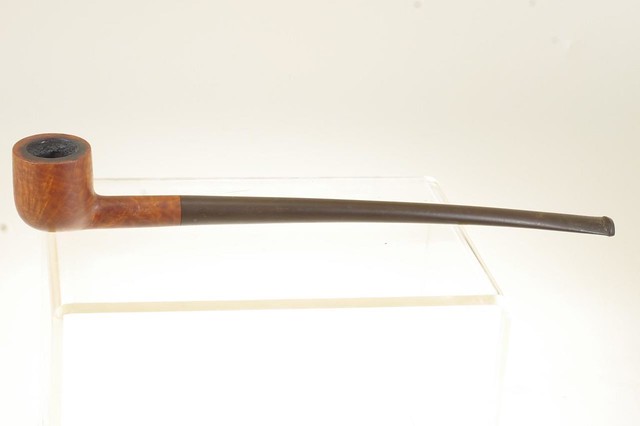 Never having seen a Brigham churchwarden (nor any reference to one’s availability) before, I was somewhat skeptical going into this. Could it be genuine or was the long stem an aftermarket modification?
Never having seen a Brigham churchwarden (nor any reference to one’s availability) before, I was somewhat skeptical going into this. Could it be genuine or was the long stem an aftermarket modification?
A few questions to the seller and a careful examination of the listing photos (thankfully of good quality, unlike so many!) provided the information I needed – the existence of the Brigham filter system in the stem foremost among the data. I bought the pipe and eagerly tracked its delivery to my door.
This series of pictures shows the pipe as it looked on arrival. It measures 10.5″ in length, with a Pot shaped stummel. The pipe had only been very gently smoked, with a bit of lava on the rear rim and a few handling marks here and there. The stem was slightly oxidized but without significant tooth chatter. The entire pipe was grimy in the hand, attesting to years of storage.
The stummel is stamped with the old-style Brigham script logo over “CAN PAT 372982” on the left shank, and a shape number “114” on the flat bottom of the bowl. Separating stem from bowl exposed the aluminum filter holder/tenon, held in place in the stem bu a single brass pin or Dot.
The fit and finish of the stem/shank junction on this churchwarden is perfect – another indication of a factory Brigham pipe – but to be quite sure of the pipe’s provenance I sent an inquiry to Brigham Enterprises and received the following confirmation:
“This pipe was made with the churchwarden stem as you noticed, and is a 1 Dot, shape #14 Brigham pipe. In regards to when Brigham made this particular pipe, it would have been prior to the 1950s. I hope this information was useful.” – H. Balsillie, Brigham Enterprises.
The CAN PAT stamp on the stummel dates the pipe to the period 1938-1955; the above information let me narrow the range somewhat to between 1938 and 1949.
With the pipe’s history established, it was time to move on to the clean-up. I started the process off with a good reaming with the Castleford reamer. There wasn’t a lot of cake in the bowl, but what was there had hardened quite a bit and it took some work to get the chamber walls back to briar. A quick spin of sandpaper around the inside of the bowl put the finishing touches on the chamber.
I wiped down the bowl and rim with cotton pads and isopropyl alcohol to remove the thin layer of lava from the rim and strip the old wax finish. A handful of cotton swabs dipped in alcohol cleared a light layer of dust and grime from the shank.
The rim still carried a ghost of the run-over tars, so I wet a few cotton swabs with good old dissolves-just-about-anything saliva and worked the last of the grime from the briar.
Moving to the stem, a few pipe cleaners dipped in alcohol removed the dust of ages. This pipe had not been heavily smoked; as you can see, the first few cleaners came out nearly uncoloured.
I finished cleaning the stummel with a scrub with Murphy’s Oil Soap and a soft toothbrush. This lifted a fair bit of grime and ground-in dirt from the briar and dissolved the last of the old wax finish at the same time.
This is probably the nicest 1 Dot Brigham briar I have come across to date. Despite its lowly appellation, there are no fills or flaws in this stummel, and the grain shows an attractive amount of flaming and perhaps just a hint of ring grain along the sides of the bowl.
After a slight detour to hunt up an extra-long pan to fit the churchwarden stem, I mixed up a bath of Oxyclean and warm water and plunked in the stem for a nice long soak to raise the oxidation from the rubber.
While the stem lounged in the tub, I refreshed the stummel with a wash coat of my version of Brigham’s “Royal” stain – a blend of Fiebing’s Saddle Tan and Dark Brown dyes. I dilute the blend to give me a bit more control over the final colour, then wipe it over the briar with a cotton pad until the finish looks about right.
After a short dry time, I hand buffed the stummel with an old towel to remove the excess stain and wiped on a light coat of mineral oil. The oil rejuvenates the briar and gives the final finish real depth.
I let the stem soak overnight before scrubbing it with 0000 steel wool and Magic Eraser to remove the oxidation. While I was at it, I used a bit of 400-grit wet sandpaper to smooth out the small amount of tooth chatter at the bit. Soon enough the stem was a nice deep black colour again.
Then it was off to the buffer for a polish with White Diamond compound for both stummel and stem. I worked carefully around the stamps – they are in excellent condition, but that can change quickly if I lose focus at the buffer!
I finished the work on this unique Brigham Churchwarden Pot by applying several light coats of Carnauba wax to the entire pipe. I’m very happy with the end results – the pipe looks fresh and new, despite pushing 80 years old. I think after so long languishing in storage, this old boy is looking forward to some well-aged tobacco and many comfortable evenings of active service! It will certainly make an excellent addition to my collection and rotation.
EDIT: In April of 2017 I received an email from Daniel More, President of Brigham Enterprises Inc with the following notes about Brigham Churchwarden pipes:
“I’ve been with Brigham since the late ‘80s. During the ‘80s we would produce 100+/- Churchwardens at Christmas. We always sold out as they were very popular. I would not suggest we made these every year nor 100 +/- when we did. But this does answer one of your questions. Yes, Brigham did produce factory made Churchwarden pipes. I only have a side view of your pipe but assume the #114 stamp matches the 1-Dot on the stem. If the numbers match, it’s an original factory piece. Looking at the grain and stamping that is one awesome 1-Dot! My recollection is that by the 1980’s we offered the CW pipe in higher grades due to the additional expense of the CW stem. The Can Pat. Stamp and the pipe quality suggest 1950’s – 1960’s. It’s a beauty!!”
– Daniel More
Here’s the finished pipe. Thanks for looking, and until next time, Happy Piping!



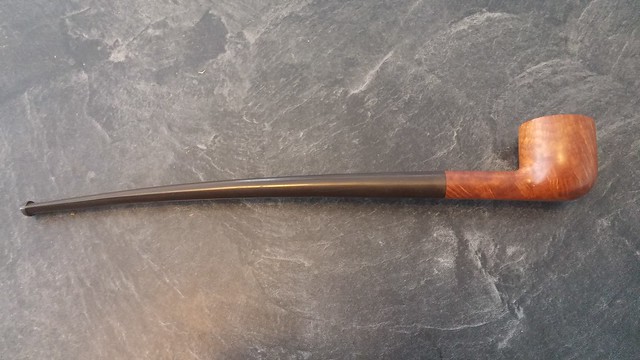
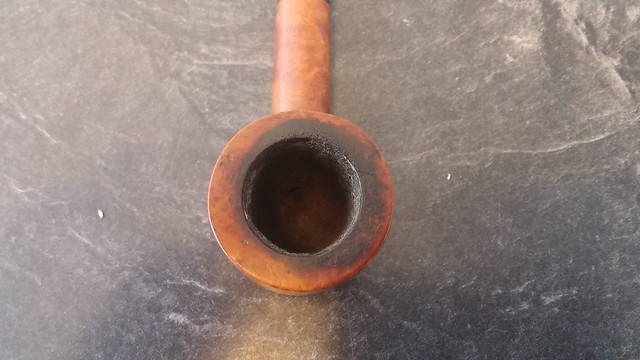
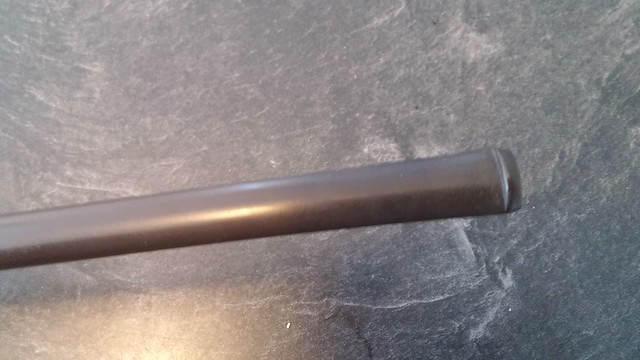
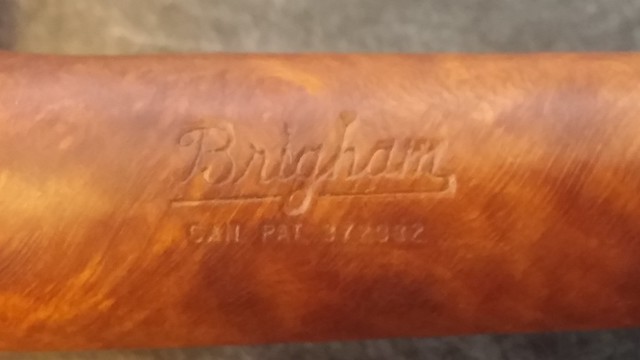

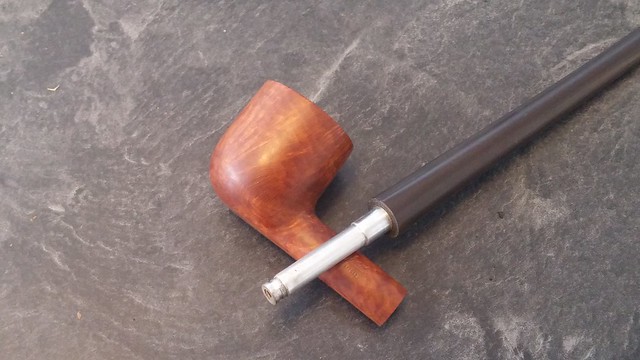

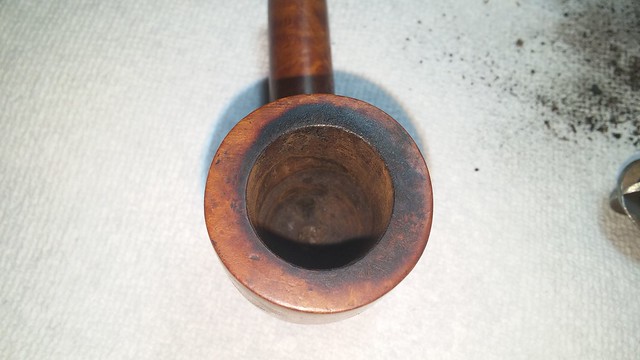
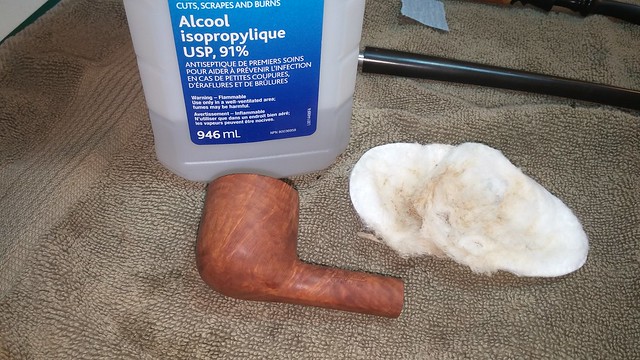

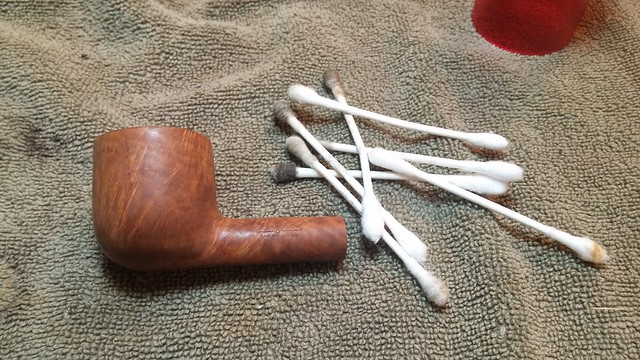
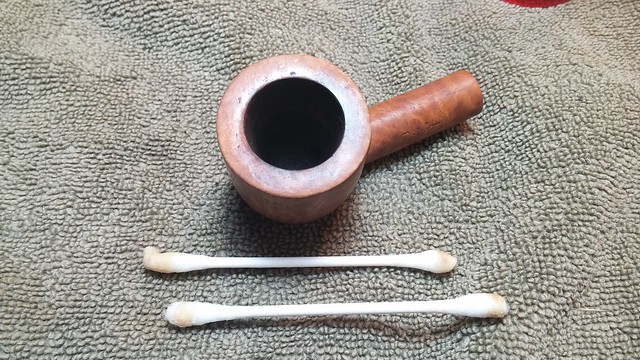
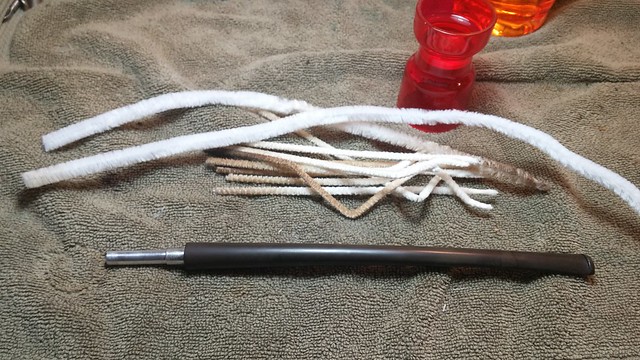
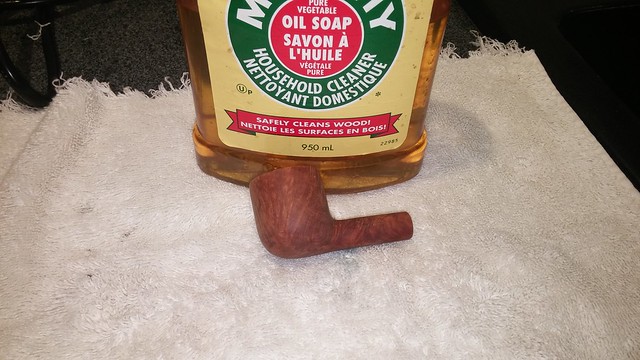
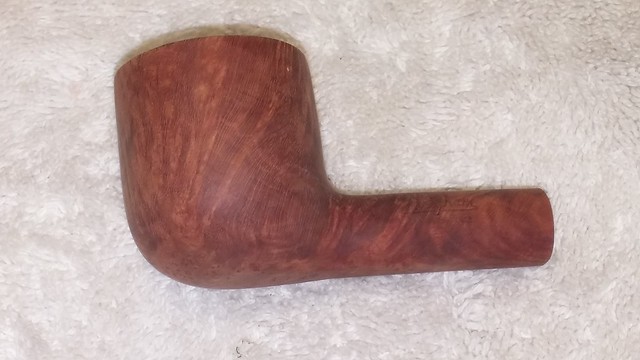
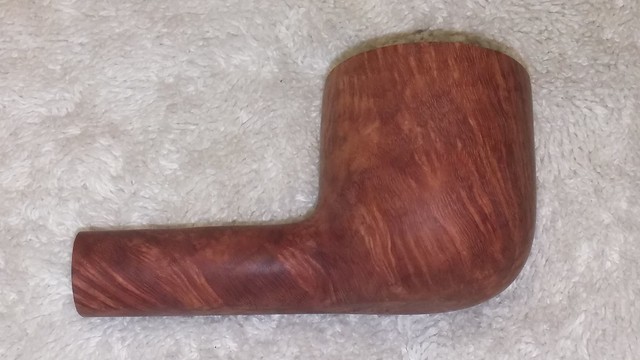
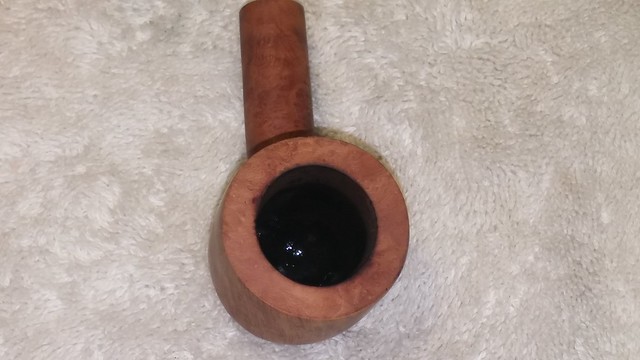
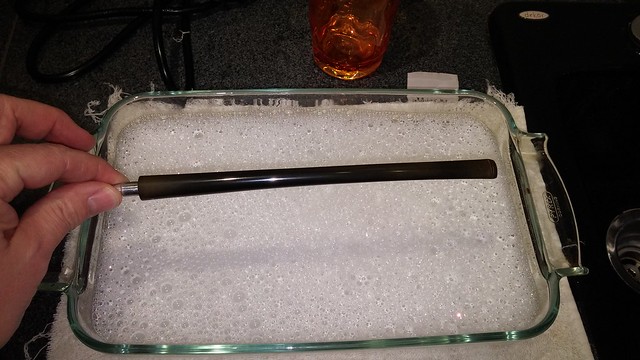
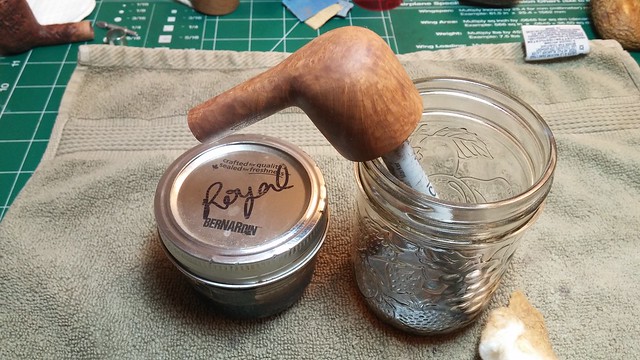

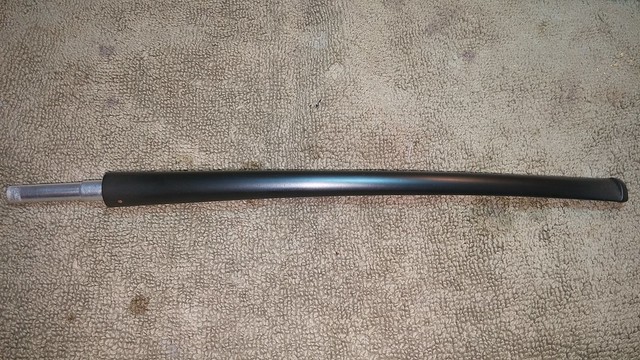
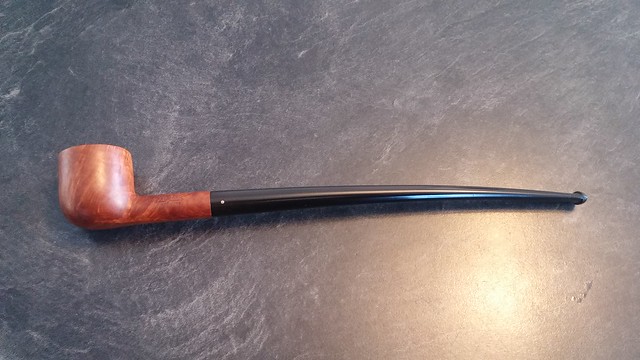
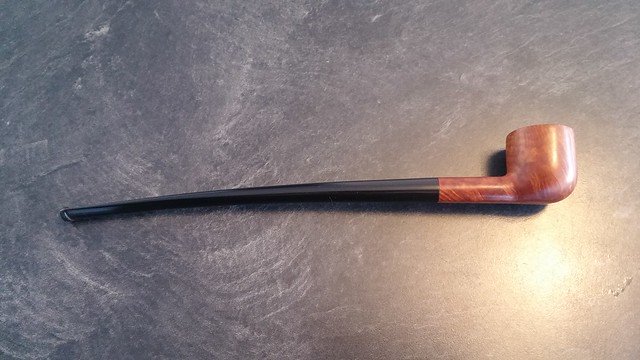
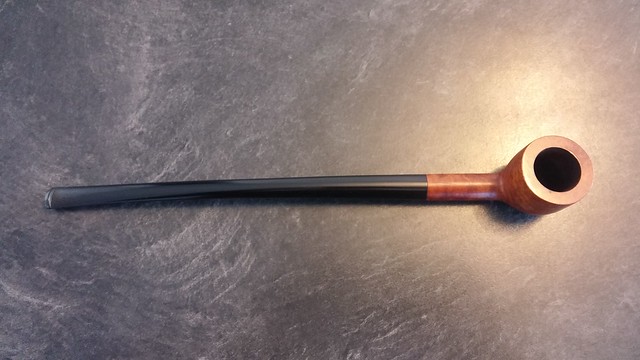
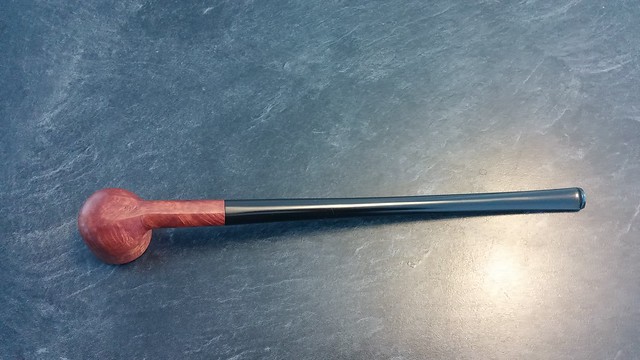
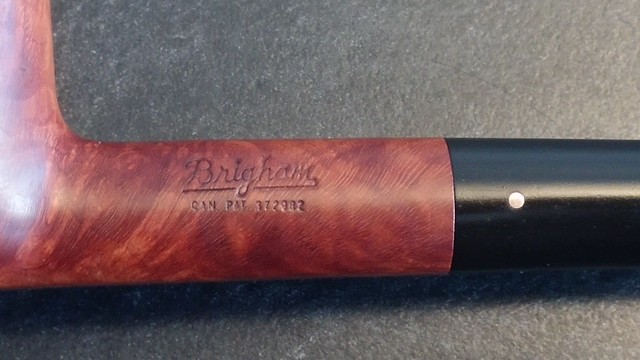
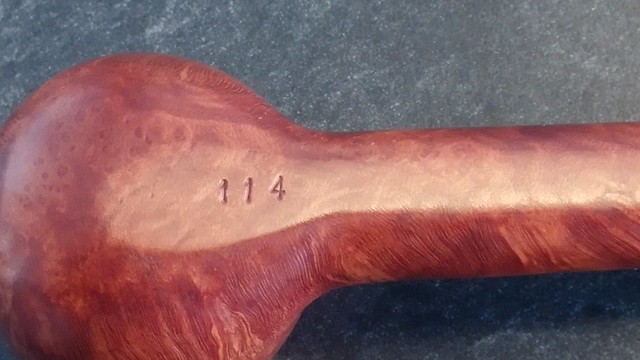

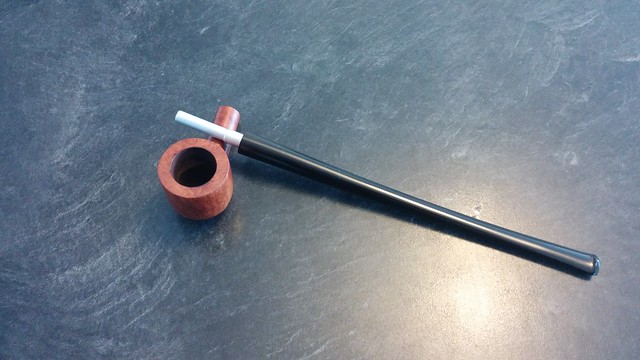
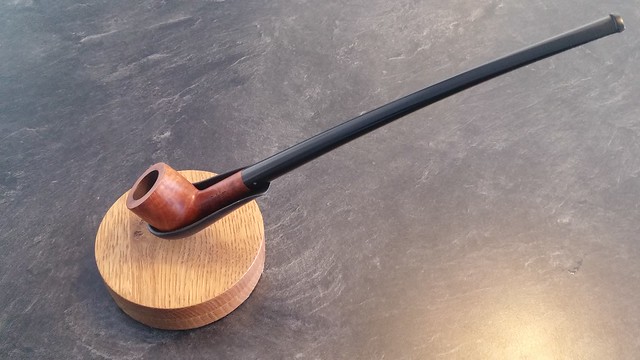

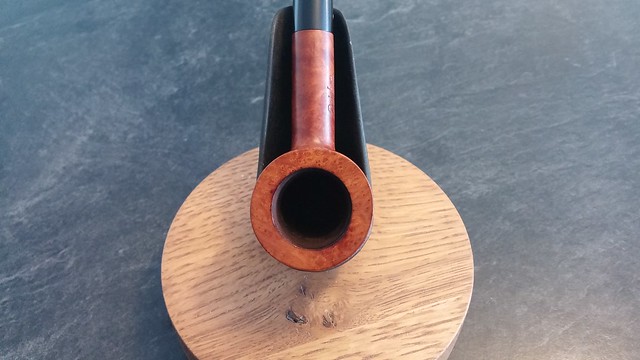
Reblogged this on rebornpipes and commented:
This is the first Brigham Churchwarden I have ever seen. Charles did his usual great job. Thought I would share it with you all!
LikeLiked by 1 person
Thanks Steve. I was really glad to be able to get confirmation from Brigham on this one. It’s s great find in my book!
LikeLike
Wow, looks new! A very cool shape for sure. I love the birdseye on the bowl top
LikeLiked by 1 person
This was a fairly easy cleanup of a very gently used pipe, Al. It would seem it has spent most of its 80-ish years in a box or drawer. High time to pack a bowl!
LikeLike
What a great looking pipe. Wish I’d seen it on Ebay first. I can recall seeing the odd Brigham churchwarden over the years at the Brigham stores in Toronto, when they still had their own B&M’s. Most of the ones I have seen, however, had rusticated finishes. I suspect your natural finished churchwarden is fairly rare. congratulation on the nice pipe and your excellent restoration.
LikeLiked by 1 person
Thanks Lowell.
LikeLike
Beautiful pipe, Charles, and congratulations on the unique expansion to your collection and rotation!
LikeLiked by 1 person
Looks factory fresh, Charles. Nice grain and a fine restoration.
LikeLiked by 1 person